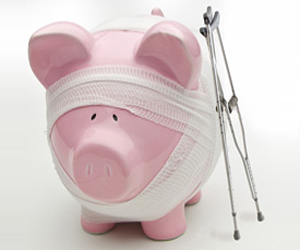Send this article to a friend:
August
12
2023
Send this article to a friend: August |
Why Uncle Sam Really Hates Cash
If you’ve ever sent a wire, ACH or e-check through a bank, and were frustrated that it took up to five business days to clear, that problem may be solved. At least, that’s what the Fed’s description of the service says:
Has U.S. banking finally moved into the 21st century? Maybe so. But like any service developed by federal institutions, there’s likely a lot more going on under the surface. We’ll discuss that in just a moment. First we need a brief glance at the ways money moves through the economy, and recent trends. Ch-ch-changes in cash It’s safe to say the U.S. financial system, despite its place at the center of the global economy, is lagging behind the times. For comparison purposes, Australia is experimenting with a major economic shift right now. One of Australia’s biggest banks quietly stopped dispensing cash at a number of its branches. ANZ Worldline Payment Solutions chief market officer Anne McDonnell claimed that, in Australia, cash is fading fast:
Now, “making physical payments” may indeed be “an inconvenience,” but does that mean cash itself is equally inconvenient? I’d argue no. Rather, cash is “an inconvenience” for some retailers, especially those employing cashiers who can’t do math. By the same logic, shopping with local independent retailers is “an inconvenience,” though it’s one I personally don’t mind in the least. The superior service I get is well worth the inconvenience. That’s my way of saying it’s a mistake to equate “inconvenience” with “obsolescence.” Let’s turn to Jim Rickards, who summarized developments down under. He ends with an important question:
How long, indeed. It’s quite possible that Australia’s economy is moving out of physical cash already. Just consider the incentives from a retailer’s perspective:
This is a prime opportunity for the Australian government to issue a digital currency to replace cash. Consider the benefits from a government’s perspective:
Before you get too comfortable, I should warn you things are shifting in the U.S. too. Take a look at the chart below. You can clearly see how cash use has been slowly declining as a form of payment: The report offered one interesting insight into the future of cash:
But therein lies the problem. The Federal Reserve has been operating in emergency mode since 2007. The Fed already predicted a potential financial crisis in 2023. A few media outlets are trying to stir a new wave of hysteria over the latest Covid-19 variant, EG.5 or “Eris.” At least ten more regional banks are on deathwatch… All this means a “major event” could happen at any time. There’s always a crisis somewhere, according to the Fed. With the FedNow payment system already established, that would make it much easier for the government to eliminate cash in favor of a digital replacement like FedCoin. To quote Perry Mason, “Cui bono?” Who benefits from the switch to a cashless economy? Why does Uncle Sam hate cash?Thanks to blockchain tech, the Fed has been talking about the implementation of a digital currency for quite some time. We’ve covered “why” the Federal Government wants to move away from physical cash in a previous article, which basically boils down to control:
Rickards illustrated what that control might look like if the U.S. were to move into a cashless society:
Slowly, then suddenly, you could find yourself an inmate in a digital financial panopticon. Surveillance is the first step in control. And let’s face it – a digital dollar only exists at the whim of the Federal Reserve and the federal government. Let’s hope that dystopia never comes to pass, because it would be the end of economic freedom. What’s the likelihood? Ask yourself, when has the federal government ever reduced its own authority and power? Keeping some cash on hand seems like the easiest solution – at least for now. But for when cash gets canceled, we’ll still have one form of physical currency… Here’s what happens when cash is really trash The “good” news is, the going-cashless experiment backfired miserably when India’s government tried it back in 2016:
Of course, this isn’t good news for the individuals who had to survive the massive financial fallout from the government’s experiment. An economic crisis of unimaginable proportions wracked the nation – which is only “good news” as far as it warns other nations not to repeat this mistake. Fortunately, there’s even better news… There’s ONE form of money that’s both universally valued and immune to cancellation by overzealous bankers or government officials. Better still, it’s unprintable and uninflatable – and it still exists whether or not you have WiFi. Even when the lights go out. Whether or not the U.S. goes cashless in the future, diversifying your savings with physical gold and silver may be smart. You might even want to keep some on hand, just in case. Gold has been recognized as money for thousands of years, and central banks keep adding more to their reserves. That’s because they know that precious metals have intrinsic value (their value is based on their utility as well as supply and demand), so they tend to retain their value over time. You can get all the information you need about both gold and silver for free to make an informed decision right here.
|
Send this article to a friend:
 |
 |
 |